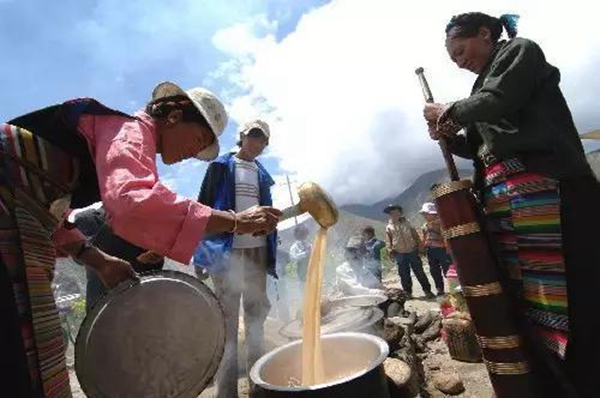|
 |
Tibetan tea culture has a history dating back at least a thousand years. In Tibetan language, tea is referred to as "jia". Tea has special functions such as aiding digestion, stopping thirst and revitalizing energy. Since meat, butter and barley is staple food for people living on the Qinghai-Tibet Plateau, there is not one day they can go without tea.
Tea was not originally produced in Tibet. In Tibetan historical chronicles, the origin of tea coming into Tibet is recorded.
In ancient Tibet, Tubo king Dusong Mangpoje had a serious illness. During his recovery, a beautiful bird he had never seen before on the roof of the palace, holding a branch with a few leaves on it in its mouth. The king sent his officials to go retrieve the branch from the bird to bring to him.
The king plucked the leaves, tasted them and decided they were fragrant and tasteful. He thought if it were added to boiling water it would make a good drink. So the king sent his officials and people to find the wonderful tree. After many arduously searching, they found the tea tree. Since that time, the tea was introduced into Tibet, where the drink gradually became an indispensable part of daily life.
Once introduced to Tibet, the people found the tea helps digestion. It has since been such a necessity in daily life that everyone from Kings and nobles to ordinary people drink this tea. Thus, the two places were linked and the Ancient Tea Horse Road came into being.
Chinese tea-for-horse trade with Tibet flourished. With this trade the tea culture of the inland China formed with the unique feature of Tibetan butter as part of it. It became deeply engrained into the Tibetan people's social customs, social etiquette and the art of living in all of its aspects; tea ceremony, tea sets, tea brewing and tea drinking became specific characteristics of tea culture on the plateau.
Related Stories